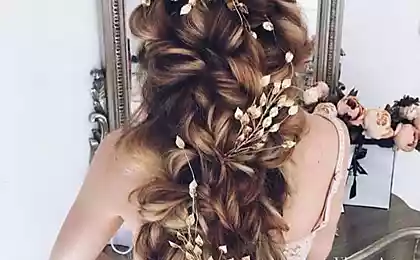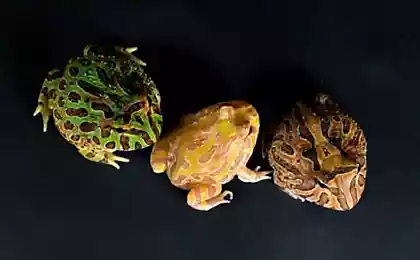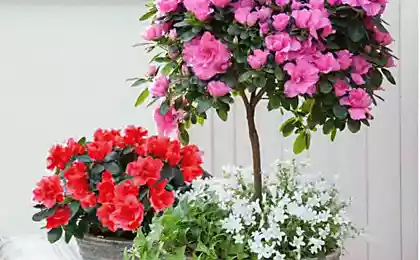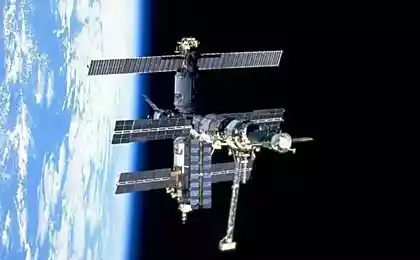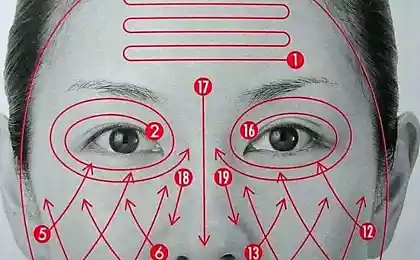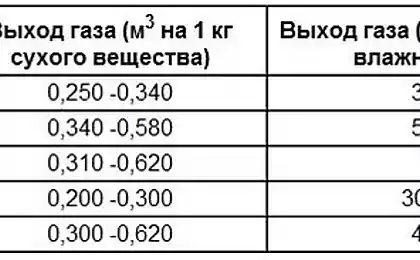526
Bougainvillea room care in the home
Eighty three million five hundred ninety one thousand four hundred sixty nine
Bougainvillea came to us from South America, and has long been at the peak of popularity among landscape designers, and lovers of room floriculture. This plant is widely used for the decoration of gardens and parks, often it is used in vertical gardening. In the period of flowering bougainvillea can transform the landscape beyond recognition.
Description of the plant
The origin and appearance
In natural conditions bougainvillea Reaches 15 meters and more. This beautiful flowering evergreen climbing plant, with a fairly flexible spiny branches. During flowering the plant is very ornamental, with large, brightly colored bracts, the flowers have a pale yellow color and on the background of the bracts are almost invisible.
Bracts can be painted in a variety of colors, there are bougainvillea with bright red, purple, pink, Burgundy, white, lemon-yellow bracts, all colors and difficult to list. In natural conditions, the plant blooms from early April until the end of September.
The leaves of the plant of medium size, ovate, rather dense and usually pubescent. Leaf size may reach a length of 12 cm.
In the indoor horticulture cultivated species such as Bougainvillea Bougainvillea is a wonderful and naked. The bougainvillea is often used to create bonsai.
Temperature mode
For good growth and abundant flowering bougainvillea the required temperature in the range from 22 to 30°C.
Lowering the temperature is only valid in a rest period, at this time, the temperature regime must not rise above 16°C and fall below 7°C. When the temperature is lowered, the plant itself stops flowering, if this is not done the bougainvilleas will bloom all year round. Lowering the temperature below 7°C may cause death of the plant. The plant does not tolerate sharp temperature decrease, and otherwise ill.
Lighting
The plant is very light and in the period from March to September, it needs the maximum amount of light. Moreover, it is desirable to plant each day were 3-4 hours in the sun. This is one of the few houseplants that sun rays do not harm, but are only good. In winter, during dormancy, the plant can be removed in more shaded places.
Location
An ideal place for growing bougainvillea in the apartment can be considered a window sill, facing South. Here the plant is both heat and light. Don't forget that bougainvillea need a good air circulation, but absolutely necessary drafts, especially cold.
Humidity
On hot days the plant needs to be sprayed, it should be done early in the morning. Do not spraying in direct sunlight as the leaves can be burned. Also when spraying you have to keep water droplets from falling on the bracts and flowers. In hot periods the room where the plant needs airing.
Requirements for the composition of the soil
In natural conditions the plant thrives on rocky soils in areas where drought is the norm. In terms of window sill plants need a soil meets the following requirements: soil should be well waterproof and breathable, slightly alkaline and fairly dense. Bougainvillea is not demanding to the composition of the soil, and grows well in almost any slightly alkaline soils.
Its cultivation on the windowsill quite often choose the soil of the following composition: three parts of turf and leaf soil, one part coarse sand and two parts peat. If there is no time to bother with such a structure it is possible to take a universal primer and just add coarse sand.
Watering
Bougainvillea in natural conditions it grows in climates where rain is not so frequent, so under the window sill the plant should be watered moderately. Between waterings should be given the soil a little dry. In the winter rest period watering is reduced to a minimum. The plant is very poorly responsive to an overflow and stagnation of water, so after watering is to wait until the water will drain in the pan and drain it. Strong drying earthen coma just will not go to the plant for the benefit, so to prevent it you should not.
Fertilizer and fertilizing
As with all potted plants, bougainvillea needs regular fertilizing for a long and vibrant flowering and active growth. Dressing to suit any complex fertilizer for flowering plants. Fertilize the plant should be no more than once every 7-10 days. During the rest period, feeding should be discontinued.
Bougainvillea planting and transplanting
Since the plants are quite strong root system, the pots for planting bougainvilleas should take deep. The presence of drainage holes in the bottom of the pot – a must! Also before you pour the substrate on the bottom lay a drainage layer of 3-4 cm.
Transplanting plants should be done by the method of handling, trying not to disturb the plants root system. In this case, the survival rate in the new pot goes unnoticed for the health and appearance of plants. Young plants should be transplanted once a year, and when they reach 3-4 years of age transplant can be done once in 3-5 years. The transplant should not take too large a pot, it is sufficient if the new pot will be 1-2cm larger than the old. Noted that the plant is not so abundant blooms in a spacious pot, as that he was small.
Bougainvillea reproduction
To propagate the plant by cuttings. For this spring or summer from healthy adult plants cut ripe green cuttings about 12-15 cm long to Cut the escape to get the handle should just below the Bud, after pruning cut needs to handle corporatesem stimulant. All the lower leaves from cuttings harvested and planted the cuttings in moist substrate.
An ideal substrate for germination of the cuttings is considered to be a mixture of peat and sand in the ratio 1\1. The mixture is poured in place box and well watered, then allowed to drain the excess water and the substrate ready for planting cuttings.
The cuttings are immersed in the substrate, immersing two internodes. After this, the nursery should create a greenhouse, simply place a box placed in a plastic bag and tie it. This procedure is needed to create high humidity required for germination of the cuttings.
The cells are arranged in bright and warm place, from time to time airing it. If possible, the better rooting, you can use the bottom heat of the liquor. For germination cuttings need the ambient environment in the range of 23 to 25°C. subject to all of the above described conditions, the cuttings rooted within 30-35 days.
For the formation of a beautiful and lush crown of the plant required timely pruning. Without such pruning bougainvillea is poorly branching, and existing shoots will be greatly extended. Pruning plants should be made in the spring during active plant growth or in autumn, after the flowering period. Trim should only the young shoots by half their length. You should not completely cut the young shoots, otherwise the plant will stop branching at all.
Caring for the plant a rest period
In winter the plant needs a period of rest, in this case the spring will be a period of stronger growth and more abundant flowering. The rest period required for the plant and due to the reduction of the natural length of daylight at this time of year. In order to ensure bougainvillea dormant period the plant with the onset of winter stand in a bright room with air temperatures from 10 to 16°C. At this temperature decreases, the plant itself will drop the flowers. Don't be stubborn lowering the temperature, as this may lead to the death of the plant. Watering during the dormant period cut, and feeding is removed completely.
To exit from dormancy in the spring, in the room with the plant start to slowly raise the temperature until it gets to the normal cultivation. Impose normal watering and fertilizing.published
P. S. And remember, only by changing their consumption — together we change the world! ©
Source: www.art-pen.ru/
Bougainvillea came to us from South America, and has long been at the peak of popularity among landscape designers, and lovers of room floriculture. This plant is widely used for the decoration of gardens and parks, often it is used in vertical gardening. In the period of flowering bougainvillea can transform the landscape beyond recognition.
Description of the plant
The origin and appearance
In natural conditions bougainvillea Reaches 15 meters and more. This beautiful flowering evergreen climbing plant, with a fairly flexible spiny branches. During flowering the plant is very ornamental, with large, brightly colored bracts, the flowers have a pale yellow color and on the background of the bracts are almost invisible.
Bracts can be painted in a variety of colors, there are bougainvillea with bright red, purple, pink, Burgundy, white, lemon-yellow bracts, all colors and difficult to list. In natural conditions, the plant blooms from early April until the end of September.
The leaves of the plant of medium size, ovate, rather dense and usually pubescent. Leaf size may reach a length of 12 cm.
In the indoor horticulture cultivated species such as Bougainvillea Bougainvillea is a wonderful and naked. The bougainvillea is often used to create bonsai.
Temperature mode
For good growth and abundant flowering bougainvillea the required temperature in the range from 22 to 30°C.
Lowering the temperature is only valid in a rest period, at this time, the temperature regime must not rise above 16°C and fall below 7°C. When the temperature is lowered, the plant itself stops flowering, if this is not done the bougainvilleas will bloom all year round. Lowering the temperature below 7°C may cause death of the plant. The plant does not tolerate sharp temperature decrease, and otherwise ill.
Lighting
The plant is very light and in the period from March to September, it needs the maximum amount of light. Moreover, it is desirable to plant each day were 3-4 hours in the sun. This is one of the few houseplants that sun rays do not harm, but are only good. In winter, during dormancy, the plant can be removed in more shaded places.
Location
An ideal place for growing bougainvillea in the apartment can be considered a window sill, facing South. Here the plant is both heat and light. Don't forget that bougainvillea need a good air circulation, but absolutely necessary drafts, especially cold.
Humidity
On hot days the plant needs to be sprayed, it should be done early in the morning. Do not spraying in direct sunlight as the leaves can be burned. Also when spraying you have to keep water droplets from falling on the bracts and flowers. In hot periods the room where the plant needs airing.
Requirements for the composition of the soil
In natural conditions the plant thrives on rocky soils in areas where drought is the norm. In terms of window sill plants need a soil meets the following requirements: soil should be well waterproof and breathable, slightly alkaline and fairly dense. Bougainvillea is not demanding to the composition of the soil, and grows well in almost any slightly alkaline soils.
Its cultivation on the windowsill quite often choose the soil of the following composition: three parts of turf and leaf soil, one part coarse sand and two parts peat. If there is no time to bother with such a structure it is possible to take a universal primer and just add coarse sand.
Watering
Bougainvillea in natural conditions it grows in climates where rain is not so frequent, so under the window sill the plant should be watered moderately. Between waterings should be given the soil a little dry. In the winter rest period watering is reduced to a minimum. The plant is very poorly responsive to an overflow and stagnation of water, so after watering is to wait until the water will drain in the pan and drain it. Strong drying earthen coma just will not go to the plant for the benefit, so to prevent it you should not.
Fertilizer and fertilizing
As with all potted plants, bougainvillea needs regular fertilizing for a long and vibrant flowering and active growth. Dressing to suit any complex fertilizer for flowering plants. Fertilize the plant should be no more than once every 7-10 days. During the rest period, feeding should be discontinued.
Bougainvillea planting and transplanting
Since the plants are quite strong root system, the pots for planting bougainvilleas should take deep. The presence of drainage holes in the bottom of the pot – a must! Also before you pour the substrate on the bottom lay a drainage layer of 3-4 cm.
Transplanting plants should be done by the method of handling, trying not to disturb the plants root system. In this case, the survival rate in the new pot goes unnoticed for the health and appearance of plants. Young plants should be transplanted once a year, and when they reach 3-4 years of age transplant can be done once in 3-5 years. The transplant should not take too large a pot, it is sufficient if the new pot will be 1-2cm larger than the old. Noted that the plant is not so abundant blooms in a spacious pot, as that he was small.
Bougainvillea reproduction
To propagate the plant by cuttings. For this spring or summer from healthy adult plants cut ripe green cuttings about 12-15 cm long to Cut the escape to get the handle should just below the Bud, after pruning cut needs to handle corporatesem stimulant. All the lower leaves from cuttings harvested and planted the cuttings in moist substrate.
An ideal substrate for germination of the cuttings is considered to be a mixture of peat and sand in the ratio 1\1. The mixture is poured in place box and well watered, then allowed to drain the excess water and the substrate ready for planting cuttings.
The cuttings are immersed in the substrate, immersing two internodes. After this, the nursery should create a greenhouse, simply place a box placed in a plastic bag and tie it. This procedure is needed to create high humidity required for germination of the cuttings.
The cells are arranged in bright and warm place, from time to time airing it. If possible, the better rooting, you can use the bottom heat of the liquor. For germination cuttings need the ambient environment in the range of 23 to 25°C. subject to all of the above described conditions, the cuttings rooted within 30-35 days.
For the formation of a beautiful and lush crown of the plant required timely pruning. Without such pruning bougainvillea is poorly branching, and existing shoots will be greatly extended. Pruning plants should be made in the spring during active plant growth or in autumn, after the flowering period. Trim should only the young shoots by half their length. You should not completely cut the young shoots, otherwise the plant will stop branching at all.
Caring for the plant a rest period
In winter the plant needs a period of rest, in this case the spring will be a period of stronger growth and more abundant flowering. The rest period required for the plant and due to the reduction of the natural length of daylight at this time of year. In order to ensure bougainvillea dormant period the plant with the onset of winter stand in a bright room with air temperatures from 10 to 16°C. At this temperature decreases, the plant itself will drop the flowers. Don't be stubborn lowering the temperature, as this may lead to the death of the plant. Watering during the dormant period cut, and feeding is removed completely.
To exit from dormancy in the spring, in the room with the plant start to slowly raise the temperature until it gets to the normal cultivation. Impose normal watering and fertilizing.published
P. S. And remember, only by changing their consumption — together we change the world! ©
Source: www.art-pen.ru/




